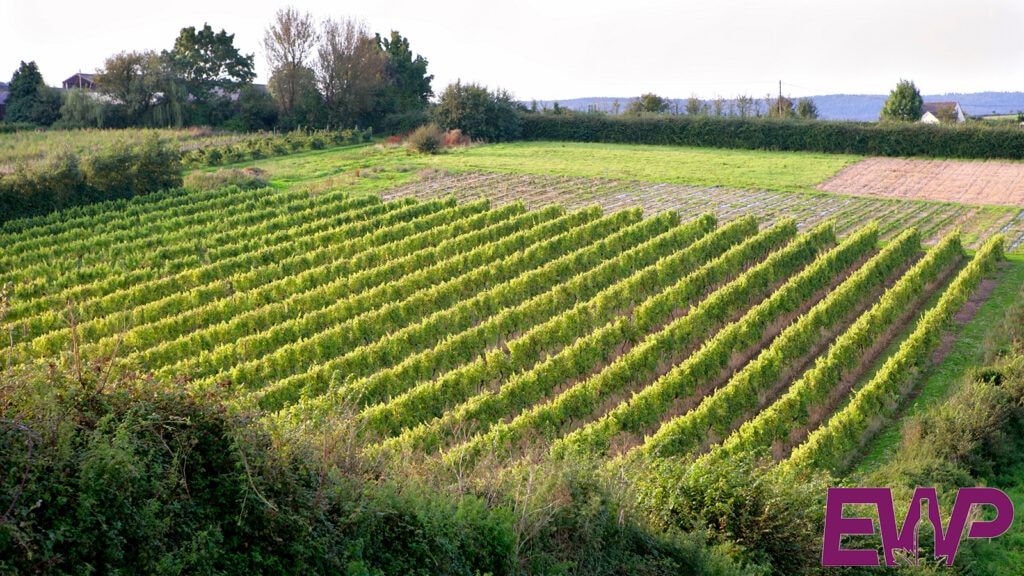The UK wine industry is growing. Many of the vineyards in the south west region of England have facilities for visitors such as shops, restaurants, function rooms and accomodation. There are many activities that visitors can enjoy at the vineyards including food and music events, as well as wine and vineyard tours. Listed below are some of the wine regions in the UK.
- East Anglia
- South East England
- South West England
- Central South
- The Midlands
- Northern England
- Wales
- Scotland
- English Channel Islands
Contents
- 1. East Anglia
- 2. South East England
- 3. South West England
- 4. Central South England
- 5. The Midlands
- 6. Northern England
- 7. Wales
- 8. Scotland
- 9. English Channel Islands
- How many wine regions are there in the United Kingdom?
- How many vineyards are there in the United Kingdom?
- What is the oldest English vineyard?
- What is the oldest Welsh vineyard?
- What is the oldest Scottish vineyard?
- What is the oldest vineyard in the English Channel Islands?
- What is the largest English vineyard?
- What is the largest Welsh vineyard?
- What is the largest Scottish vineyard? (H3)
- What is the largest vineyard in the English Channel Islands?
- How many wineries are there in the uk?
- What are the popular grape varieties in the UK?
1. East Anglia
East Anglia began commercial wine production in the mid 1970’s. Today, the vineyard area of East Anglia is over 208.3 hectares, which is over 9% of the total vineyard area in England. East Anglia has a variety of soil types, varying from light loam and clay, chalk and flint, and alluvial gravel. East Anglia has the driest climate of the UK wine regions.
East Anglia produces many types of sparkling and still wine and are known for their fruity aromas. The major grape varieties grown in East Anglia include Bacchus and Pinot Noir, however, other varieties such as Solaris, Madeleine Angevine, and Seyval among others are also grown in this region. The facilities found at the vineyards in East Anglia include shops, restaurants, accommodation and venue hire and many of the vineyards are open to the public for tours and tastings. Some of the wine counties of East Anglia are listed below.
- Bedfordshire
- Cambridgeshire
- Essex
- Norfolk
- Suffolk
2. South East England
South East England began commercial wine production in the late 1960’s. Today, the vineyard area of South East England is over 1108 hectares, which is over half of the total vineyard area in England. South East England has many chalky hills which make up the North and South Downs which are ideal for sparkling wine. South East England has high average temperatures and sunshine hours which boost grape production.
South East England produces many types of sparkling and still wines and many are nominated for awards. The major grape varieties grown in South East England include Bacchus, Chardonnay, Pinot Noir, Pinot Grisa and Pinot Meunier. The facilities found at the vineyards in South East England include shops, restaurants, accommodation and venue hire and many of the vineyards are open to the public for tours and tastings. Some of the wine counties of South East England are listed below.
- East Sussex
- Hertfordshire
- Kent
- London
- Surrey
- West Sussex
3. South West England
South West England began commercial wine production in the early 1950’s. Today, the vineyard area of South West England is over 310 hectares, which is over 14% of the total vineyard area in England. South West England has a variety of terrains suitable for grape production. South West England has high average temperatures and sunshine hours which boost grape production.
South West England produces many types of sparkling and still wines. The major grape varieties grown in South West England include Bacchus, Pinot Noir, Seyval Blanc, Regent and Solaris. The facilities found at the vineyards in South West England include shops, restaurants, accommodation and venue hire and many of the vineyards are open to the public for tours and tastings. Some of the wine counties of South West England are listed below.
- Bristol
- Cornwall
- Devon
- Dorset
- Gloucestershire
- Somerset
- Wiltshire
4. Central South England
Central South England began commercial wine production in the late 1970’s. Today, the vineyard area of Central South England is over 433.4 hectares, which is over 19% of the total vineyard area in England. Central South England has many chalky hills making it ideal for sparkling wine production. Central South England has high average temperatures and sunshine hours which boost grape production.
Central South England produces many types of sparkling and still wines. The major grape varieties grown in Central South England include Chardonnay, Pinot Noir, Pinot Meunier and Bacchus. The facilities found at the vineyards in Central South England include shops, restaurants, accommodation and venue hire and many of the vineyards are open to the public for tours and tastings. Some of the wine counties of Central South England are listed below.
- Berkshire
- Hampshire
- Buckinghamshire
- Oxfordshire
5. The Midlands
The Midlands began commercial wine production in the late 1970’s. Today, the vineyard area of the Midlands is over 110 hectares, which is over 5% of the total vineyard area in England. The Midlands vineyards are planted on south facing slopes with sandy loam which offer good drainage. The Midlands has colder winters and warmer summers than the rest of England because it’s further away from the moderating effects of the sea.
The Midlands produces many types of sparkling and still wines. The major grape varieties grown in the Midlands include Madeleine Angevine, Müller-Thurgau, Reichensteiner, Gewürztraminer, and Schönburger. The facilities found at the vineyards in the Midlands include shops, restaurants, accommodation and venue hire and many of the vineyards are open to the public for tours and tastings. Some of the wine counties of the Midlands are listed below.
- Derbyshire
- Herefordshire
- Leicestershire
- Lincolnshire
- Northamptonshire
- Nottinghamshire
- Shropshire
- Staffordshire
- Worcestershire
- West Midlands
6. Northern England
Northern England began commercial wine production in the mid 1980’s. Today, the vineyard area of Northern England is over 31.7 hectares, which is over 1% of the total vineyard area in England. Northern England has many hills and the vines are usually planted on the south facing slopes to maximise sunshine hours. Northern England has the lowest temperatures in England resulting in a lower yield.
Northern England produces many types of sparkling and still wines. The major grape varieties grown in Northern England include early ripening varieties such as Rondo, Solaris, Madeleine Angevine, Seyval Blanc, and Ortega. The facilities found at the vineyards in Northern England include shops, restaurants, accommodation and venue hire and many of the vineyards are open to the public for tours and tastings. Some of the wine counties of Northern England are listed below.
- Yorkshire
- Lancashire
- Northumberland
- Cheshire
7. Wales
Wales began commercial wine production in the early 1875. Today, the vineyard area of Wales is over 42.6 hectares. Wales has a high average rainfall and therefore the sheltered areas of the country have more success with grape production.
Wales produces many different types of sparkling and still wines. The major grape varieties grown in Wales include Seyval Blanc, Baccus, Madeleine Angevine, Reichensteiner, Kernling and Huxelrebe. The facilities found at the vineyards in Wales include shops, restaurants, accommodation and venue hire and many of the vineyards are open to the public for tours and tastings. Some of the wine counties of Wales are listed below.
- Anglesey
- Ceredigion
- Carmarthenshire
- Conwy
- Glamorgan
- Gwynedd
- Monmouthshire
- Pembrokeshire
- Powys
8. Scotland
Wine production in Scotland began in 2015. There are very few vineyards in Scotland and cover an area of over 0.3 hectares. Scotland is very cold for growing grapes and therefore many techniques are used to protect the vines from frost.
One commercial vineyard in Scotland is growing hybrid grapes such as Siegerrebe to make wine. Many of the other wineries in Scotland produce fruit and mead wines. Only one of the vineyards in Scotland is open to the public and is attached to a hotel and restaurant. Some of the wine counties in Scotland are listed below.
- Aberdeenshire
- Perthshire
9. English Channel Islands
The English Channel Islands began commercial wine production in the early 1970’s. Today, the vineyard area of the English Channel Islands is over 15 hectares. The English Channel Islands have differing soils. The Isle of Wight has chalky soil and Jersey and Guernsey have fertile soils on top of granite. The English Channel Islands weather is very variable due to the proximity to the sea and therefore good yields are difficult to obtain.
The English Channel Islands produce many types of sparkling and still wines. The major grape varieties grown in the English Channel Islands include Pinot Noir, Regent, Rondo and Orion and Solaris. The vineyards on the English Channel Islands have many facilities to accommodate visitors. Visitors to some of the vineyards on the English Channel Islands will find tours, restaurants, shops, function rooms and places to stay. Listed below are some of the wine-producing islands in the English Channel.
- Isle of Wight
- Jersey
- Guernsey
How many wine regions are there in the United Kingdom?
There are at least 9 different wine regions in the UK. The South East wine region has the most vineyards due to the better climatic and geological conditions that exist there. The South East wine region includes the counties such as East Sussex, Kent, Surrey, and West Sussex. The South West is also a popular UK wine region which includes the counties such as Cornwall, Devon, Dorset and Gloucestershire.
What are the most popular wine regions in the UK?
The most popular wine regions in the UK are Sussex, Kent, and Surrey. These regions are popular because of their ideal climate and geographic location. The climate is warmer and the soil is made up of chalk and limestone which add the needed acidity to the grapes for good sparkling wine.
Which region in the UK has the most vineyards?
Sussex is the region in the UK with the most vineyards. Sussex has at least 104 vineyards.
How many vineyards are there in the United Kingdom?
There are over 800 commercial vineyards in the UK. The total area the vineyards cover in the UK is at least 3,661 hectares, however,not all are commercially run, and not all vineyards in the UK are being used in production.
What is the oldest English vineyard?
Hambledon Vineyard in Hampshire is the oldest commercial vineyard in England. Hambledon vineyard opened in 1952 and covers an area of 80.9 hectares. Hambledon Vineyard is owned by Ian Kellett.
The grapes produced at Hambledon Vineyard include Chardonnay, Pinot Noir and Pinot Meunier. These grapes are used to produce sparkling white and sparkling rosé wine. Hambledon vineyard is open to the public for wine tasting and tours and they also host pop up restaurant events.
What is the oldest Welsh vineyard?
Glyndwr Vineyard in Glamorgan is the oldest commercial vineyard in Wales. Glyndwr vineyard opened in 1979 and covers an area of 1.65 hectares. Glyndwr Vineyard is owned by Richard and Sue Norris.
The grapes produced at Glyndwr Vineyard include Reichensteiner Seyval Blanc, Regent, Rondo, Triomphe, and Pinot Noir. These grapes are used to produce sparkling white, sparkling rosé wine, still white wine, still rosé wine and still red wine. Glyndwr vineyard is open to the public for wine tasting and tours and they also have accommodation available for visitors.
What is the oldest Scottish vineyard?
There are no vineyards currently operating in Scotland.
What is the oldest vineyard in the English Channel Islands?
Adgestone Vineyard on the Isle of Wight is the oldest commercial vineyard in the English Channel Islands. Some of the vines at Adgestone vineyard were planted in1968 and the total vineyard area covers 4 hectares. Adgestone Vineyard is owned by Russ Broughon and Philippa Jane.
The grapes produced at Adgestone Vineyard include Seyval Blanc, Phoenix, Orion, Schonburger, Bacchus, Regent, Pinot Noir, and Rondo. These grapes are used to produce still white, still rosé wine, and still red wine. Adgestone Vineyard is open to the public for wine tasting and tours, accommodation for visitors, a place to grab a bite to eat and they also host music events.
What is the largest English vineyard?
Denbies Wine Estate is the largest vineyard in England covering 107 hectares. Denbies Wine Estate, in Surrey opened in 1986 and is owned by the White family. The grapes grown at Denbies wine estate include Seyval Blanc, Reichensteiner, Muller Thurgau, Bacchus, Ortega, Chardonnay, Pinot Noir, Dornfelder, Rondo, and Pinot Meunier. These grapes are used to produce sparkling white, sparkling rosé wine, still white wine, still rosé wine and still red wine. Denbies Wine Estate is open to the public for tours, has a function room for private and corporate events, a space for weddings and a hotel.
What is the largest Welsh vineyard?
Ancre Hill Estates is the largest vineyard in Wales covering 12 hectares. Ancre Hill Estates, in Monmouth opened in 2006 and is owned by David Morris. The grapes grown at Ancre Hill estates include Chardonnay, Pinot Noir, Albarino, and Triomphe. These grapes are used to produce sparkling white, sparkling rosé wine, sparkling red, still white wine, still rosé wine and still red wine. Ancre Hill Estates is open to the public for tours, has a function room for private and corporate events, and an on site shop.
What is the largest Scottish vineyard? (H3)
There are no vineyards currently operating in Scotland.
What is the largest vineyard in the English Channel Islands?
Rosemary Vineyard is the largest vineyard in the Channel Islands covering over 5 hectares. Rosemary Vineyard, on the Isle of Wight first planted their vines in the year 1986 and is owned by Conrad Gauntlett. The grapes grown at Rosemary Vineyard include Bacchus, Schonburger, Madeleine Angevine, Orion, Reichensteiner, Muller Thurgau, Triomphe, Rondo, Pinot Gris, and Seyval Blanc. These grapes are used to produce sparkling white, sparkling rosé wine, still white wine, still rosé wine and still red wine. Rosemary Vineyard is open to the public for tours, has a restaurant, camping facilities and an on site shop.
How many wineries are there in the uk?
There are at least 195 wineries in the UK. The wineries offer different kinds of tasting experiences. Some of the wineries in the UK have self guided tastings whereas others are guided by a sommelier. There are many wineries in the UK that offer food platters or lunches to accompany the wine tasting experience. Some of the wineries in the UK have accommodation to create a more complete visitor experience. Many of the top wineries can be found in South East England, South West England and Central South England. There are maps of English wineries available for visitors to find out where many of the wineries can be found.
What are the popular grape varieties in the UK?
The most popular grape varieties in the UK are those traditionally used in making Champagne. The most popular grape varieties in the UK are listed below.
- Chardonnay
- Pinot Noir
- Bacchus
- Pinot Meunier
- Seyval Blanc
What are the most popular English wines?
English wines are gaining the reputation to be among the best in the world. Some of the most popular English wines are listed below.
- Langham Wine Estate’s Blanc de Blancs 2018
- Hattingley Valley’s King Cuveé 2014
- Nyetimber’s 2018 Classic
- Hambledon’s Classic Cuveé Rosé NV
- Simpsons Wine Estate’s Roman Road 2020




